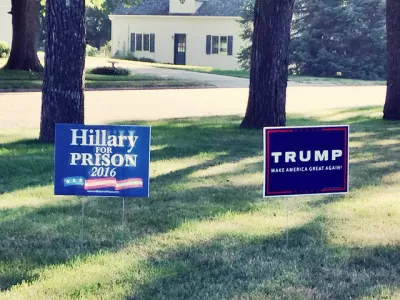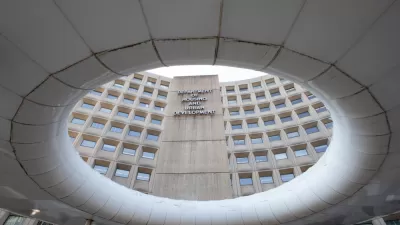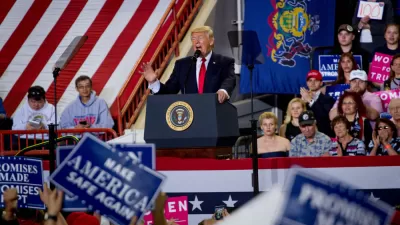Analysis of Trump's favorability ratings with suburban voters and the demographic trends of recent years could doom his recent messages regarding the Democratic agenda for the suburbs.

Since President Trump recently attacked and eventually scrapped the Affirmatively Furthering Fair Housing rule in a move that has been derided as a racist and divisive political stunt that seems unaware of the administration's previous actions, some media commentators have also noted the political shortcomings of Trump's new ploy for the suburbs: the suburbs aren't what they used to be, but not in the way that Trump means it.
Analysis by Emily Badger and Nate Cohn provides data driven analysis of the shifting demographics of the suburbs, finding support for many of the social causes sparking Trump's ire of late. The analysis relies on recent innovations in distinguishing between suburban and urban, based on survey data generated by the U.S. Department of Housing and Urban Development, which in turn expanded on previous survey research by Trulia.
As noted by Badger and Cohn, Trump has been "[playing] on the perceived fears of suburban voters. But there are several reasons to believe that a strategy that worked for Richard Nixon on the heels of urban unrest in 1968 is less likely to be effective for Donald Trump in 2020."
According to data shared by Badger, broken down on the geographic definitions generated by HUD's recent survey, "while polling shows that suburban voters disapprove of the president’s job in general, they disapprove even more of his handling of the very issues he is trying to elevate."
Additional commentators have cited this New York Times analysis to echo the idea that suburban voters aren't following the same political patterns as they did at the end of the 20th century: Eric Levitz for New York magazine and Ronald Brownstein for CNN.
In another article that predates Badger and Cohn's analysis, Jamelle Bouie argues that Trump's political error originates from a slightly different, but relate kind of demographic misunderstanding: that the silent majority, as it existed for Nixon in 1969. Like the suburbs, the silent majority has changed. They are both more diverse, and less likely to support Trump than ever.
FULL STORY: Why Trump’s Blunt Appeals to Suburban Voters May Not Work

Alabama: Trump Terminates Settlements for Black Communities Harmed By Raw Sewage
Trump deemed the landmark civil rights agreement “illegal DEI and environmental justice policy.”

Planetizen Federal Action Tracker
A weekly monitor of how Trump’s orders and actions are impacting planners and planning in America.

The 120 Year Old Tiny Home Villages That Sheltered San Francisco’s Earthquake Refugees
More than a century ago, San Francisco mobilized to house thousands of residents displaced by the 1906 earthquake. Could their strategy offer a model for the present?

Ken Jennings Launches Transit Web Series
The Jeopardy champ wants you to ride public transit.

BLM To Rescind Public Lands Rule
The change will downgrade conservation, once again putting federal land at risk for mining and other extractive uses.

Indy Neighborhood Group Builds Temporary Multi-Use Path
Community members, aided in part by funding from the city, repurposed a vehicle lane to create a protected bike and pedestrian path for the summer season.
Urban Design for Planners 1: Software Tools
This six-course series explores essential urban design concepts using open source software and equips planners with the tools they need to participate fully in the urban design process.
Planning for Universal Design
Learn the tools for implementing Universal Design in planning regulations.
Clanton & Associates, Inc.
Jessamine County Fiscal Court
Institute for Housing and Urban Development Studies (IHS)
City of Grandview
Harvard GSD Executive Education
Toledo-Lucas County Plan Commissions
Salt Lake City
NYU Wagner Graduate School of Public Service





























